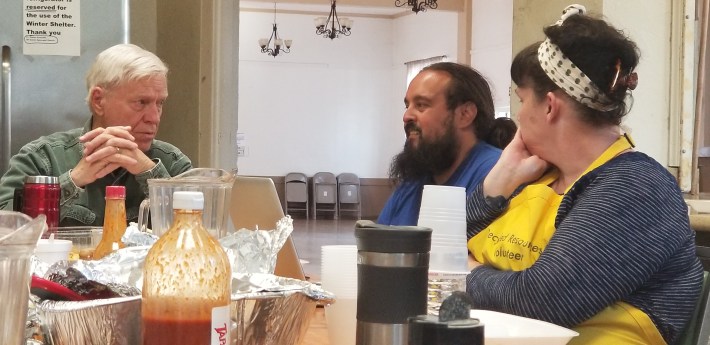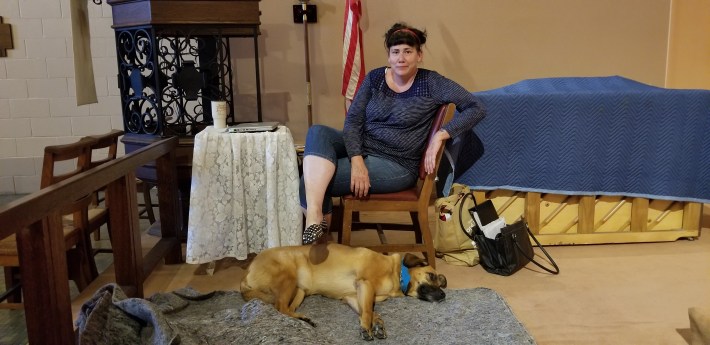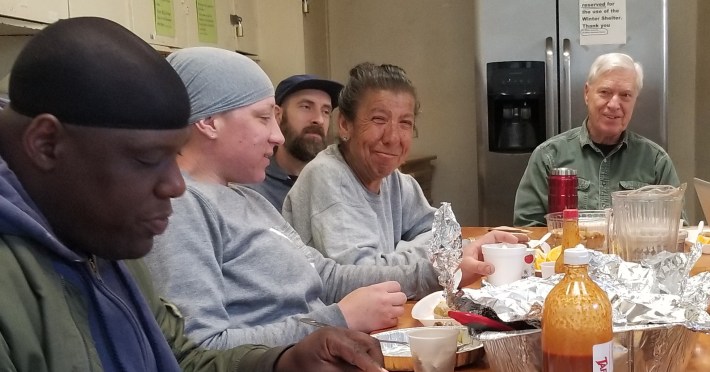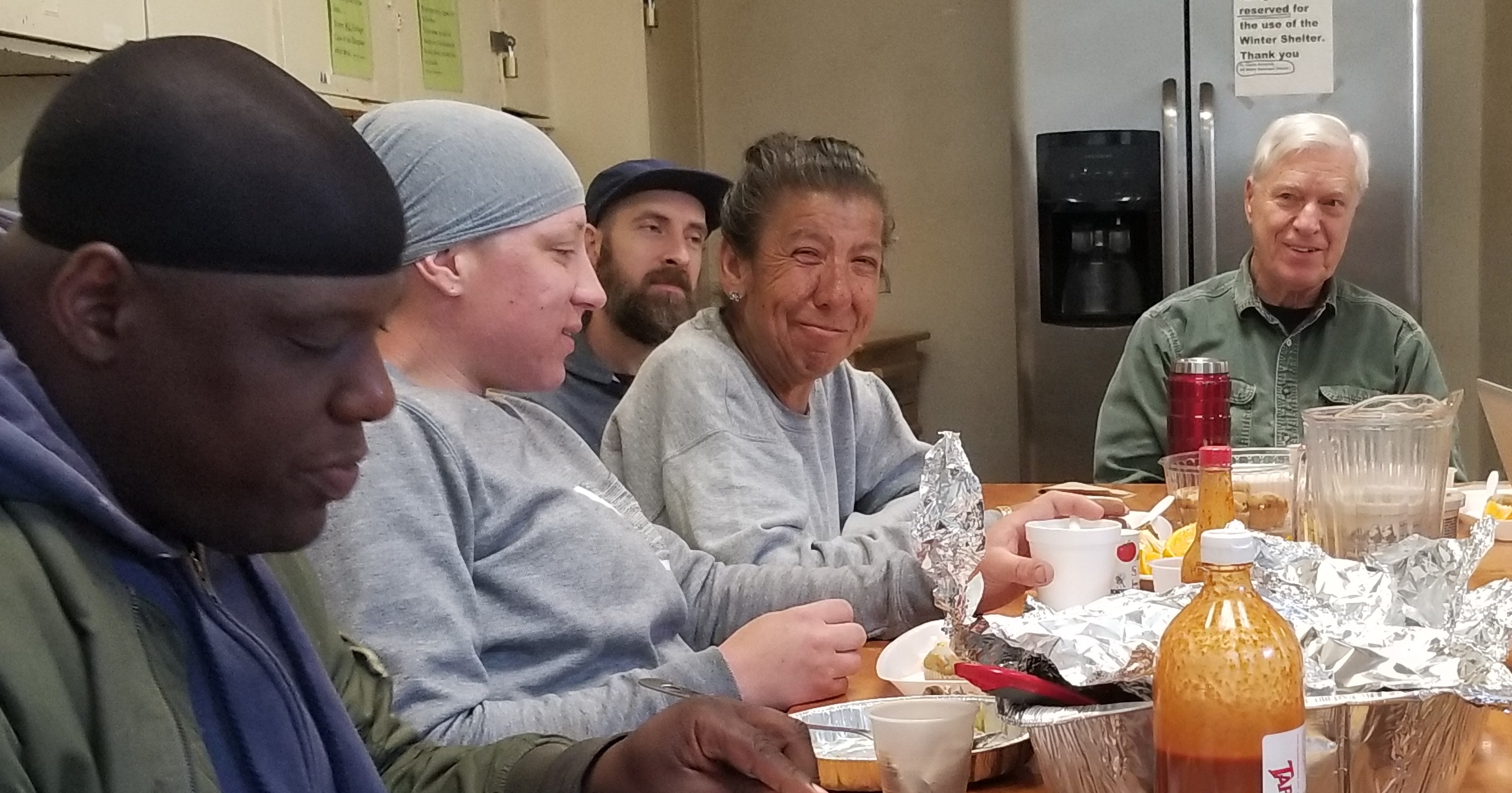[dropcap size=big]T[/dropcap]hey just don’t want to leave Highland Park, their neighborhood. Duane grew up with his mother on Avenue 66, but he hasn’t had a place to call home for years. He and his mom have struggled with homelessness ever since their landlord doubled their rent one year, he says. Another local, displaced in the waves of gentrification.
Duane is 40 years old and attended local Arroyo Seco Elementary and Burbank Junior High School. He graduated with the Class of 1996 at Eagle Rock High. Now Duane watches out for his mother, who has Type-2 diabetes, and works a night shift part-time at the Dolby Theatre in Hollywood.

From the mid-2000s on, however, he and his mother have called the streets of Northeast L.A. their “home,” at different times sleeping in Sycamore Grove Park and erecting a makeshift residence out of a tent in Millard Canyon in Altadena. They also sometimes slept in motel rooms, since they couldn’t afford a first and last month’s rent, as usually required for a security deposit.
He says they stay around where he grew up because his mother doesn’t want to leave the area. It is familiar to them. The neighborhood is home.
But everything changed last month for Duane and his mom. A year-round homeless shelter opened in Northeast L.A., a first for the area, with an innovative “community model” of operation. Rebecca Prine, director of Recycled Resources, which opened the shelter in April, says it could offer a cost-effective transitional housing option to the city as Los Angeles struggles with the countywide homelessness crisis.

Prine launched the shelter, dubbed Casa De Clarke, at All Saints Church in Highland Park. It’s functioning at a fraction of the cost of conventional homeless housing. Now home to eight people, it’s the only shelter in the area. But it could serve as a case study for more.
The house is unique because it is operating outside the purview of the city and the L.A. Homeless Services Authority. The program is not staffed. Clients let themselves in every evening at around 6 pm and check themselves out every morning at 8 am. There is no one monitoring them at night. That keeps costs down significantly.
The number of people living on the street last year jumped 23 percent to nearly 60,000, according to the L.A. Homeless Services Authority, or LAHSA. The homelessness problem is also becoming more deadly. Some 831 homeless died last year, a near two-fold increase over the past five years, according to news reports. Oftentimes people living on the streets refuse to move into housing that displaces them from the area where they once lived in a house or apartment.
RELATED: Homelessness Is So Bad This Man Decided To Chain Himself to a Fence and Go on a Hunger Strike
In another era, the homeless might have found refuge in crumbling downtown hotels and tenements, but downtown L.A.’s revitalization — or gentrification — has since transformed many of those once-reliable options in a sweep of evictions, renovation, and rent increases. While the city is promising more homeless housing, new units will take a long time to get built, as long as a decade from, according to L.A. Mayor Eric Garcetti’s own goals.
“If we wait for this [permanent supportive] housing that was promised by 2040, a lot of people will further deteriorate if not die if they are left without shelter,” Prine says. “We are trying to year-round shelter beds because there are just too many people on the streets.”

Casa De Clarke
Casa De Clarke is essentially a one-woman show, and Prine’s energy and focus is contagious. She says right now she depends on volunteers to make Northeast L.A.’s first year-round homeless shelter possible. She is hopeful that will change.
A homeless shelter with next to no staff could be considered a liability by city officials, so conventional facilities might be hard pressed to deploy such an approach. On the other hand, that’s what makes Casa De Clarke lean and flexible.
There is precedent for the idea, too. Safe Haven at the Ocean Park Community Center in Santa Monica has been helping the homeless struggling with drug addiction and chronic mental health problems, Prine explains. In the meantime, no one else is stepping up to the plate in the Northeast, she adds, so maybe an outside-the-box approach to homelessness is what’s needed.
“There is no homeless service provider in Northeast L.A. There is Ascencia in Glendale and Union Station in Pasadena, but there’s nothing in our area,” she says.
'We just need spaces for people.'
[dropcap size=big]R[/dropcap]ecycled Resources started with a winter shelter in 2015 at Father Clarke Prescott’s All Saints Episcopal Church in Highland Park. The winter shelter provided about 30 beds — in fact, homeless would sleep on church pews — for three winters. Prine and Rev. Clarke said by the third winter they noticed many of the same people showing up at the church.
Rev. Clarke describes their approach as a community-based model, in his words, a “self-sustaining, self-supporting, self-monitoring shelter.”
Prine checks in to see how they’re doing on Tuesday evenings, and Rev. Clarke joins Prine and the program participants for breakfast the following morning. The program currently has eight participants, with room for a maximum capacity of ten. They elect a resident assistant who holds on to the keys to the church.
“We’re not sure this is going to work. Every homeless shelter is heavily monitored. They have staff to check them in, staff to make sure they wake up in the morning, staff to let them out,” Prine says.
They’re bootstrapping this program for now to see if it can be replicated, potentially to many other churches and other buildings throughout Northeast LA. Prine’s already in talks with clergy at a church in Cypress Park, because “essentially we don’t need any money to run this program. We just need spaces for people.”
RELATED: These Old-School Shops in Highland Park Just Heard Their Rent Will Rise By 250 Percent







